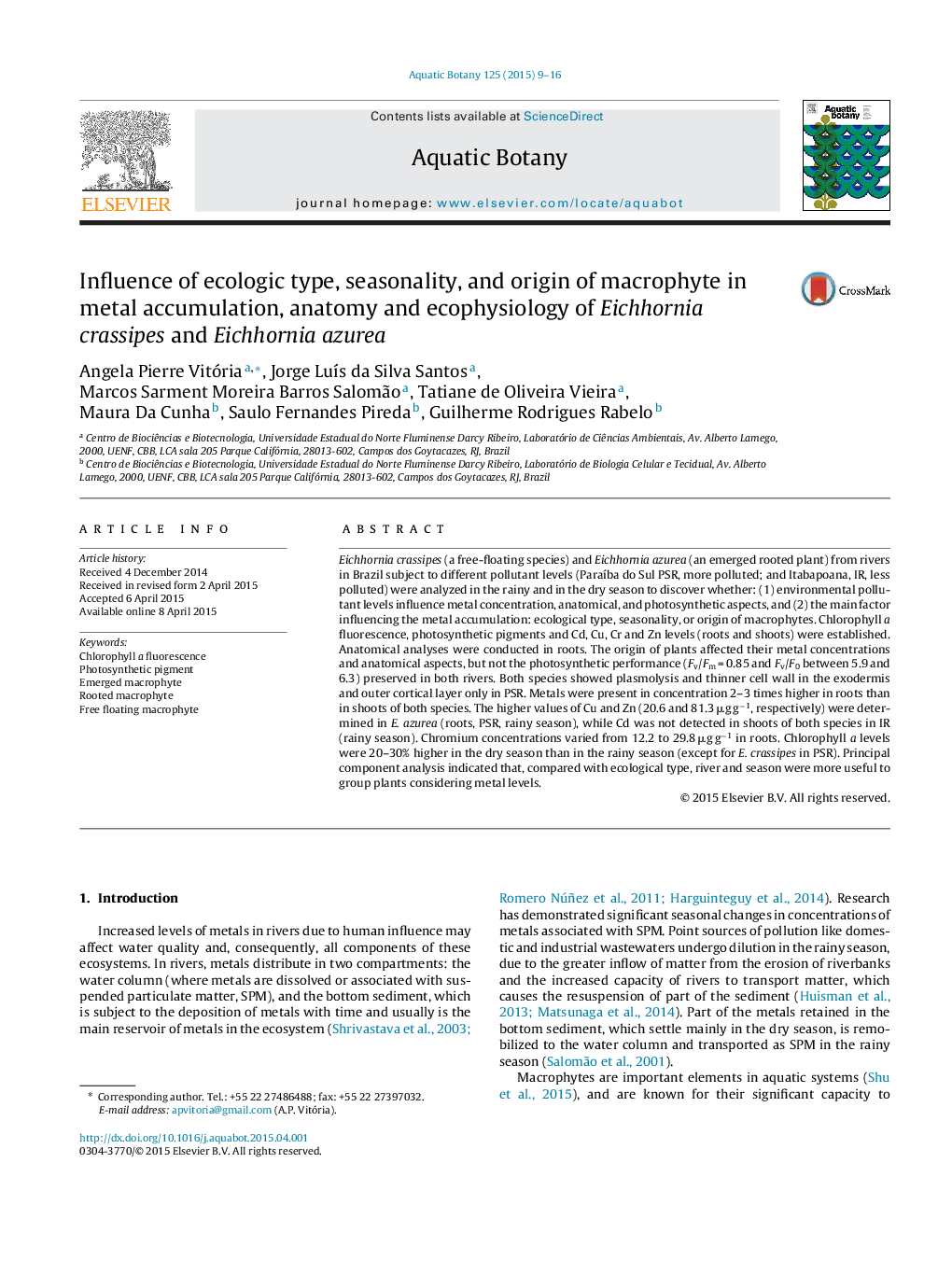| کد مقاله | کد نشریه | سال انتشار | مقاله انگلیسی | نسخه تمام متن |
|---|---|---|---|---|
| 4527625 | 1625817 | 2015 | 8 صفحه PDF | دانلود رایگان |

• Seasonality and river are more important than ecological type in metals accumulation.
• Ecological type is relevant in more polluted river to determine metal concentrations.
• Photosynthesis is preserved under pollution conditions that cause anatomy alterations.
• Ecological type was influenced only in the dry season and for the more abundant metals.
Eichhornia crassipes (a free-floating species) and Eichhornia azurea (an emerged rooted plant) from rivers in Brazil subject to different pollutant levels (Paraíba do Sul PSR, more polluted; and Itabapoana, IR, less polluted) were analyzed in the rainy and in the dry season to discover whether: (1) environmental pollutant levels influence metal concentration, anatomical, and photosynthetic aspects, and (2) the main factor influencing the metal accumulation: ecological type, seasonality, or origin of macrophytes. Chlorophyll a fluorescence, photosynthetic pigments and Cd, Cu, Cr and Zn levels (roots and shoots) were established. Anatomical analyses were conducted in roots. The origin of plants affected their metal concentrations and anatomical aspects, but not the photosynthetic performance (Fv/Fm = 0.85 and Fv/F0 between 5.9 and 6.3) preserved in both rivers. Both species showed plasmolysis and thinner cell wall in the exodermis and outer cortical layer only in PSR. Metals were present in concentration 2–3 times higher in roots than in shoots of both species. The higher values of Cu and Zn (20.6 and 81.3 μg g−1, respectively) were determined in E. azurea (roots, PSR, rainy season), while Cd was not detected in shoots of both species in IR (rainy season). Chromium concentrations varied from 12.2 to 29.8 μg g−1 in roots. Chlorophyll a levels were 20–30% higher in the dry season than in the rainy season (except for E. crassipes in PSR). Principal component analysis indicated that, compared with ecological type, river and season were more useful to group plants considering metal levels.
Journal: Aquatic Botany - Volume 125, August 2015, Pages 9–16